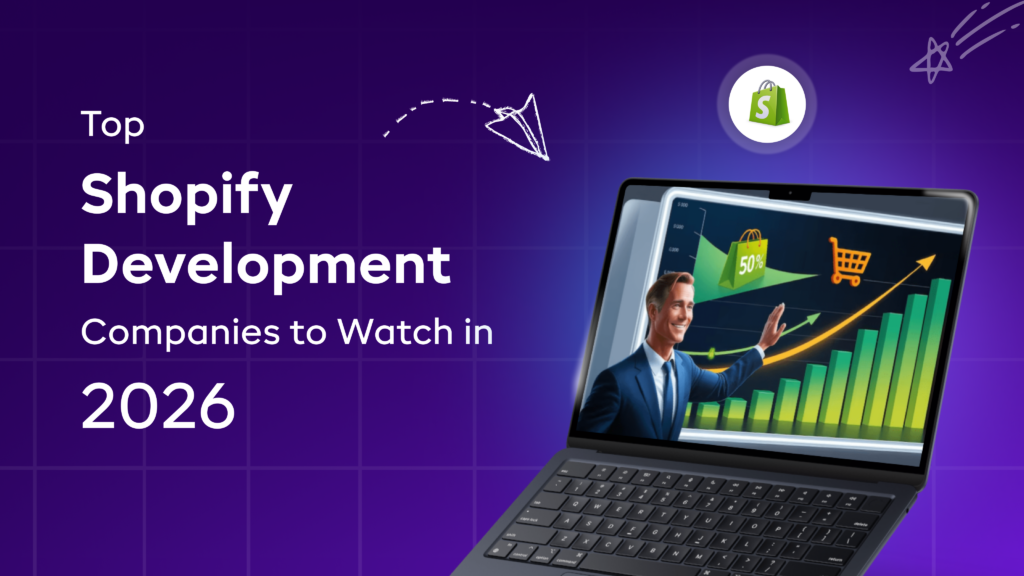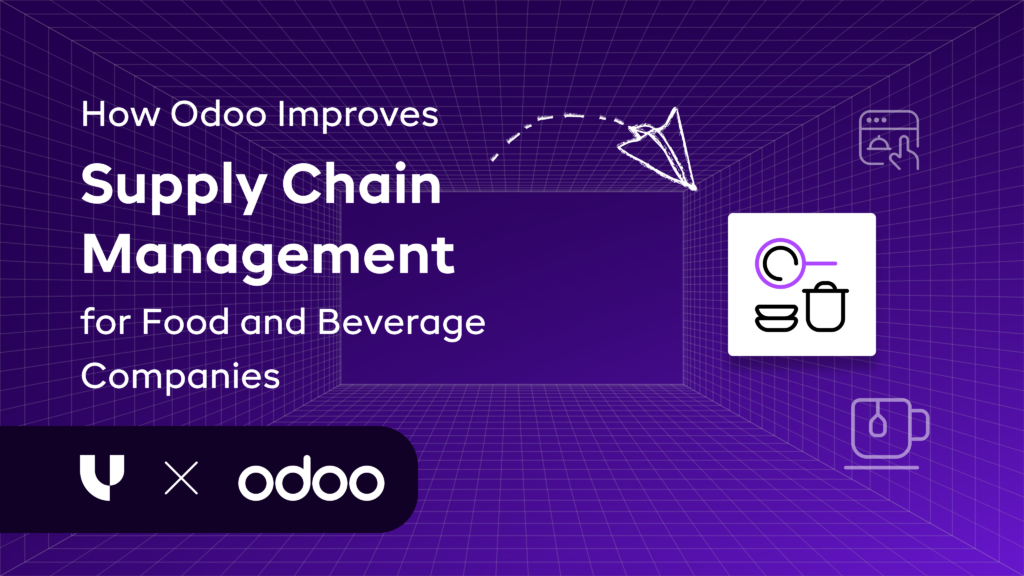Boost Your Fashion eCommerce with Odoo: A Complete Guide
Published on October 4th 2025

Summary
Why Read This Guide (and Who It’s For)… Fashion industry keeps changing at the speed of light. Matching that velocity with operations is a grand often unacknowledged achievement of its own. That also means you have to be on-the-go and your operations have to be streamlined to a tee. This well-oiled machine must be hiccup free and ready to scale as you go.
As expert Shopify Development Services provider, we have seen the joy and utility of implementing Shopify Online Stores firsthand for our clients and the positive impact it has had on the overall revenue bottom-line; however, often this growth only goes so far when our client, the growing fashion retailer decides to stick to their legacy backend systems.
Now they discover the challenges of managing storefront platform that looks great and works well; however, it is nowhere enough sturdy to be able to successfully manage thousands let alone hundreds of SKUs and inventory, returns, compliance and multi-channel sales. Enter Odoo.
Our Shopify and Odoo teams have created this guide for:
- Fashion eCommerce leaders creating a long-term growth roadmap to scale beyond small-time apps and manual workarounds like excel sheets.
- Existing Shopify store owners who have nailed the customer experience but are struggling with accounting, inventory or frequent returns
- Growing eCommerce operations and finance managers in mid-size fashion retail who need visibility into margins, compliance and supply chain health
- Mid-market fashion brands planning to expand internationally or balance wholesale and D2C operations
Therefore, if the hustle of sustaining and growing your eCommerce business and storefront is hitting with day-in and day-out chaos and dysfunction, we strongly urge you to ready this guide as we demonstrate why integrating your Shopify Storefront with Odoo ERP backend will make your life far easier and success visible right at the next cross roads.
Your Shopify Storefront Needs Reliable Foundation for Scalable eCommerce Endeavors
Shopify is pretty incredible on its own, we know it firsthand, implementing frontends for hundreds of clients globally. However, this sleek fashion brand store is just that a storefront and not the entire warehouse and robust reliable support that can keep you worry-free as you scale.
The Advantages of Shopify Shopfronts are Underrated and Unbelievable
1. Effortless Customer Experience
The gold standard in modern shopping experience, Shopify ecommerce stores are pretty much the benchmark for what customers expect from online fashion storefronts.
- Beautiful, mobile-first themes ecosystem
- Smooth checkout and payment gateway integrations
- Marketing campaign templates for seasonal trends, influencers and more
Take the case of US-based Mabruuk This American luxury brand is known for abayas, scarves and their signature perfumes. When they partnered with Uncanny, they needed to upgrade from their existing Wix store to Shopify to reflect their premium identity. At this stage of brand evolution the new Shopify storefront reduced cart abandonment, streamlined checkout, improved navigation and further introduced flexible trust policies. As a result, we saw 40% increase in traffic and a 30% boost in conversion profits. This success proves why Shopify remains the gold standard for fashion storefronts.
2. Speed & Flexibility
The larger Shopify ecosystem helps you launch, adapt and experiment quickly with different SKUs, trending items or having a discount or a sale nearly overnight or launch a quirky marketing campaign overnight.
- Seamless and fast-paced new collection launches
- Easy to test marketing campaigns or landing pages
- Ready-to-use apps for upsells, reviews, loyalty programs and more
3. Scales Front-End Without Tech Headaches
Black Friday Sale that Viral TikTok campaign or a last-minute holiday rush your Shopify frontend is scalable with enterprise-grade infrastructure built in to ensure your store and supporting ops keep running at the most uptime all time.
- Secure hosting, CDN, and performance baked in.
- Efficiently handling spikes in website traffic in scenarios such as after successful marketing campaigns or influencer shoutouts.
4. Starts Breaking at a Greater Scale
Even though Shopify has made major breakthroughs especially for Entrepreneurs starting and evolving into a midsize business, it still isn't going to fix everything itself, on its own as the scale grows.
- Inventory complexity with multiple warehouses, regional SKUs and stockouts during high demands
- Gaps in detailed compliant accounting standard implementation
- Data Silos in Marketing, logistics and customer service data
Case in Point: Mabruuk
As your fashion brand grows, you are bound to be confronted with deeper issues including an unexpected inventory sprawl, accounting blind spots and blame games across departments due to disconnected data. This is where Shopify on its own starts to hit its limits.
How an Odoo Backend comes to the aid of a Shopify Storefront at its limits
A beautiful online storefront is the crown jewel of any fashion brand. Using Shopify your brand can make delightful mobile-first shopping experiences happen that keep converting. However, great design and checkout workflows are only one side of the coin as you scale. At one point when you are doing things right, you begin to scale and your fashion eCommerce becomes a high-stakes game of logistics, inventory and financial precision. That is precisely why a good storefront wins your customer’s attention, but without operational strength behind it which Odoo implementation brings, your long term growth can quickly become fragile.
1. The Inventory Chaos
Fast Fashion is all about an unsettling number of SKUs multiplying rapidly in an array of sizes, colors, patterns and fabrics. This complexity hits you hard and fast.
Use Case: Let's take the example of our client India-based Vasa Indica is a premium clothing partner for global luxury brands. While Shopify powered the storefront beautifully, their back office told a different story at this stage of their growth journey. They had scattered product catalogs, mismatched size and color variants and painful GST/HSN compliance issues which were keeping the team frustrated with too much to do while not having enough time and of course, slowed growth. Manual uploads often meant errors crept in daily and the finance teams wasted cycles fixing invoices instead of closing books.
This is when they realized they had to optimize their systems and partnered with Uncanny. With Uncanny’s Shopify + Odoo ERP integration, Vasa Indica was able to centralize their entire catalog, automated inventory updates and further synced Shopify with Odoo for taxation, invoicing and POS orders. The outcome saw a 95% increase in delivery efficiency with a whopping 82.5% jump in profits. Not just that, the love they received from their customers poured even more. Their customers now benefited from a premium digital experience, while the brand finally gained a unified audit-ready back office.
Our client's success story demonstrated that Shopify shines as the face of fashion eCommerce but with Odoo ERP at the backend it becomes much more rewarding to scale across catalogs, states and global markets profitably.
2. Returns & Exchanges Hassles
Fashion eCommerce retail unfortunately enjoys the highest return rates of any industry often averaging 30–40%. From sizing issues to buyer’s remorse or seasonal campaigns can often turn the revenue tide into an operational flood.
Use Case: Let's overview the curious case of this women’s apparel brand that ran a successful Instagram campaign for their Summer Floral Ruffle Dress. Their orders quickly spiked, but just within weeks an unfortunate 35% of customers returned the dress due to sizing issues. In this case, Shopify does help you process refunds, but returned stock is never reconciled in the system. This leaves the finance team grappling with messy books of accounts, inflated sales figure, unaccounted for inventory and hidden ghosts.
How Odoo Shopify Integration with Uncanny fixes this pain point:
Odoo is equipped with the Return Merchandise Authorization (RMA) workflow which is made to manage every return end-to-end.
At Uncanny, we are experts in both Shopify as well as Odoo implementations. This means your workflows are configured to the tee. Items are restocked automatically and credit notes are issued where applicable. Not only that the financial entries are reconciled without manual work.
As a result, your Sales data stays clean and your inventory is updated instantly not just across Shopify but across your warehouses as well. Sounds like magic but it’s just our expertise.
3. Margins Hidden in Discounts
Fashion Marketing is thirsty for the blood of discounts and endless promotions; however, this can often make you lose sight of the actual profitability of what you have set out to achieve. Are you sabotaging your own profits?
Use Case: This fictional luxury handbag retailer runs a “Buy 2, Get 1 Free” promotion when the Holiday Season is around the corner. Shopify dashboards show impressive sales volumes and the marketing team celebrates happily. However, once the free units are exhausted and you need to make influence commission payouts and often times large shipping costs the entire campaign ends up bleeding money.
How Odoo Shopify Integration with Uncanny can stop this bleeding:
Odoo is equipped with advanced ERP-like Accounting capabilities that can seamlessly integrate directly with Shopify. This gives you the power to track the actual landed costs vs the impact of discounts and determine the overall profitability of your marketing endeavors. Granular reports with drill downs by product line, collection or season gives you the capability of seeing the effect of promotions as they happen so you can accurately judge whether it adds value or bleeds cash.
4. Wholesale vs. Retail Split
When your fashion brand grows, the revenue model too evolves from selling direct-to-consumers to moving on to fulfilling bulk orders for other chain stores or larger brands. Diversifying your channels means added complexity in operations which creates inefficiencies and errors.
Use Case: In the case of this sustainable denim company that runs a D2C shopify store who also had 25 boutique partners, the tracking of operations was much more complex. They tracked wholesale orders manually in spreadsheets, while used Shopify to largely manage customer orders. Well, as it turned there were plenty of double bookings, deliveries were often delayed and they could not accurately forecast production and raw materials.
How Odoo Shopify Integration with Uncanny solves this dilemma:
Odoo has the capability to consolidate wholesale with D2C orders under one single solution and database - your ERP. This means your wholesale pricing tiers, credit terms and invoicing are managed side by side with existing Shopify consumer orders pooling and relying on the data fetched from the same inventory pool. This creates a single source of truth across both your channels so there are no false flags, no more allocation errors and a great deal of time saved.
5. Cross-Border & Tax Compliance
Selling internationally is a milestone in your career as an online retailer; however, the compliance can quickly prove to be a dealbreaker, especially, when dealing with regulations between U.S., EU and other state-wise regional tax rules.
Use Case: Take this case of this U.S. fashion retailer who expanded into Europe with city-wise localized Shopify storefronts. Initially the orders flowed in smoothly, but the accounting quickly became a nightmare. That's because GAAP applies in the U.S. while VAT applies in Europe and currencies based one exchange rate needs to be reconciled. Their finance team was ready to run away due to late filing and the looming threat of penalties.
How Odoo Shopify Integration with Uncanny keeps international ecommerce brands compliant:
Odoo's Accounting module integration with your Shopify storefront at the hands of experts automatically applies regional tax rules, generates compliant invoices and reconciles your Shopify storefront orders across currencies. Your financials are not only consolidated but Audit-ready so you have ample peace of mind as you keep scaling globally.
6. Supply Chain Blindness
Blind Spots hurt not just your peace of mind but also the revenue when it comes to Fashion eCommerce. Your Shopify Storefront is seamlessly managed only when it is supported by a transparent supply chain. Stockouts can hurt a lot more than your revenue, it hurts the reputation of your brand. During demand surges, a Fashion Brand is not in a position to wait for weeks for the next stock-in.
Use Case: This fast fashion brand sources their autumn winter collection from three vendors. On Shopify it appears that demand has been steadily surging for jus this one style; however, there is no visibility on which supplier can deliver the stock-in fastest. This brings in guess work and as a result orders pile up unfulfilled, customers are frustrated, especially the prepaid ones and negative reviews pile up in peak season.
How Odoo Shopify Integration eliminates these blind spots:
Odoo has procurement management capabilities that can be seamlessly integrated with your Shopify Storefront. Your purchase orders are automated based on the projected trends in Shopify. So now you have the power to track vendor lead times and can prioritize the specific suppliers that can support you for this urgent demand so you are never blindsided and caught off guard.
7. Scaling Beyond Apps
Duplication in processes and data silos when your business is quickly growing and you are adding more and more apps to Shopify's frontend can lead to inefficiencies and downtime. Most importantly, it becomes difficult to track what is reflecting and exactly from where in terms of the data operations you manage online.
Use Case: For instance, this streetwear brand saw a rapid growth surge after receiving a shoutout from multiple influencers. Their daily orders surged from 100 to 3000 in a matter of weeks. Even though the Shopify apps were pretty great in handling reviews, loyalty and inventory separately, the data became scattered. Not only that manual reconciliations had to be done in terms of inventory, accounting and post sales operations which slowed down the team. As a result, customers began complaining about late deliveries and stockouts.
How Odoo Shopify Integration streamlines scaling operations:
Odoo is a centralized ERP hub that is affordable for emerging brands. Since, it is the same database and a single system, everything you need is interconnected and you get a consolidated view, the Big Picture of the entire business as it happens. So now you don't really need to firefight and patch things with multiple apps and compatibility issues but you can simply run a single integrated backend system which keeps things functioning at all time, levels and scale of operations.
Why does Uncanny make the most Uncanny Shopify Odoo Implementations and Integrations?
At Uncanny, we don’t look at apps and solutions in Silos. We look at them as an interconnected holistic and strategic solution for businesses operating at all scales and sizes. We do not just build Shopify storefronts, in fact, we engineer fashion eCommerce ecosystems that are easier to scale.
In addition, our team brings together the best of all words. We have Shopify eCommerce experts who design, customize and optimize storefronts for high conversions as well Odoo ERP implementation experts. What sets us apart is our ability to extend Shopify into the back office with Odoo ERP Accounting, Inventory and Supply Chain integrations.
While most development teams stop at the storefront, we go beyond the application to solve the harder problems including SKU chaos, returns, wholesale vs. retail splits, cross-border tax compliance and supply chain blind spots. And, we even understand Ruby on Rails, the framework Shopify itself runs onso we can build custom connectors and apps that others can not when or if the need arises.
Let's give you a clearer context on how things work when you work with us for a Holistic eCommerce Transformation.
Want to start a project with us?
Empowering businesses to achieve greatness through strategic guidance and innovative solutions.
Book A Demo

About Author


